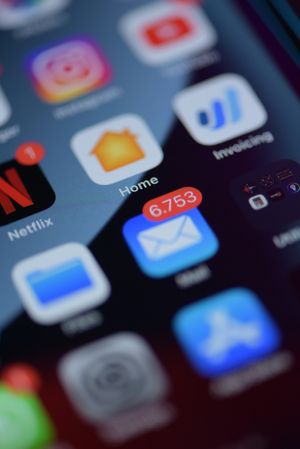Imagine this – you've spent precious time crafting the perfect cold email, nailing your pitch, and weaving those magic words to woo and snare leads.
You're feeling confident, but as you reach the end of your email, you find yourself facing that all-too-familiar sign-off dilemma – should it be "Best Regards," "Warm Regards," or something equally generic? Sound familiar?
I’ve found myself in the same position. But don’t fret because today, we're on a mission to decode the mysteries of those infamous email sign-offs.
Mysteries like: what the heck do these sign-offs mean anyway, when is the best time to use them, and more importantly – is there a more compelling way to end an email?
1. When Should You Use “Best Regards”?
"Best Regards" is the tried and true email sign-off that has been making its mark on letters and correspondence since the 14th century.
This classic phrase has been around for centuries, carrying its own timeless charm. But what does it really mean?
Well, think of it as saying, "I wish you well," or "cordially." It's like a polite nod to the recipient, signaling you hold them in high esteem.
And "Best Regards" can adapt to different levels of formality. If you want to keep it semi-formal, add a "With" at the beginning, making it "With Best Regards."
But if you're feeling a bit more casual and friendly, "Best Regards" on its own works just as well.
You might be wondering when to whip out this trusty sign-off in your emails. Well, let me break it down for you:
Use “Best Regards” to Show Respect to the Recipient
When you find yourself reaching out to someone you don't know too well, or you're communicating with a potential client for the first time in a cold email, "Best Regards" can be your best bet.
It strikes the right balance between being polite and friendly without coming off as too familiar.
Semi-Formal Situations
Imagine you're in the middle of closing a deal, and there's a bit of back-and-forth happening with your prospect. "Best Regards" can be an excellent way to maintain professionalism while still being approachable.
It shows that you value the relationship and are genuinely interested in their needs.
Wrapping Up a Neutral Conversation
If your email exchange was more about sharing information or confirming details, "Best Regards" works well as a courteous way to wrap things up too. It's like a virtual handshake that leaves a positive impression.
Of course, there are a ton of other situations where you can use “Best Regards” – owing to its timelessness– so if you aren’t sure what to put, you can’t go wrong with it.
2. When Should You Use “Kind Regards”?
Think of "Kind Regards" as the close cousin of "Best Regards" with its own touch of formality and warmth. So, when should you opt for this charming sign-off in your emails? Let's explore:
Building Rapport with New Contacts by Signing off with “Kind Regards”
"Kind Regards" can be an excellent choice when you're initiating contact with someone for the first time so you can build rapport. Whether it's a potential client, a new lead, or a business partner, this sign-off shows a genuine interest in establishing a connection.
Demonstrating Professionalism
In more formal or corporate settings, where you want to maintain a professional tone, "Kind Regards" can be your go-to choice. It's a respectful way to close your emails, especially when dealing with senior executives or clients from conservative industries.
Nurturing Existing Relationships
If you've already established a working relationship with the recipient and you want to continue nurturing it, "Kind Regards" serves as a warm and courteous way to wrap up your communication.
Responding to Positive Interactions
Did you receive positive feedback or a thank-you from a client? Responding with "Kind Regards" is a thoughtful way to acknowledge their sentiments and express your appreciation.
The beauty of "Kind Regards" lies in its ability to bridge the gap between formality and friendliness, making it a great option for a wide range of professional situations.
However, remember that context is key. While "Kind Regards" is an elegant choice, it might not fit every situation.
For instance, when you're reaching out to a close collaborator or a longtime business partner in a more casual setting, you might want to explore other options I’ll be sharing in this article.
3. X+ "Best Regards" Alternatives
I won’t bore you with regulars like “Sincerely” or “Respectfully.” Let’s look at some different scenarios and sign-offs that work for them:
Casual Email Sign-Offs
Try these “best regards” alternatives for a more laid-back and relaxed atmosphere:
- Take Care: A friendly and caring sign-off that shows you genuinely want the recipient to stay safe and well. Ideal for casual conversations with colleagues, friends, or contacts you have a warm rapport with.
- Until Next Time: This one leaves the conversation open-ended and invites future interactions. Perfect for wrapping up casual exchanges with leads or clients you're building a relationship with.
- Cheers: A casual and upbeat choice, much like a virtual clink of glasses. Use it when you want to maintain a light and friendly tone in your email, suitable for colleagues or acquaintances.
- Have a Great Day: A simple yet warm way to wish someone a great day ahead. Appropriate for both professional and personal contacts, it leaves a positive impression.
- Looking Forward to Connecting: This sign-off expresses enthusiasm for future interactions and fosters a sense of anticipation. Use it when wrapping up conversations with potential leads or new clients.
- Warmly: A slightly more affectionate version of "Best Regards," "Warmly" adds a personal touch and works well with people you have a closer connection with, like colleagues or friendly clients.
- All the Best: A versatile ending that's friendly, warm, and well-wishing. Suitable for various scenarios, including ending emails with colleagues, leads, or clients you have a professional yet cordial relationship with.
- Stay Awesome: An informal and lighthearted way to sign off emails to colleagues, especially when you want to share positive vibes.
- Catch You Later: A playful close that's perfect for wrapping up casual conversations with coworkers or friends within the office.
- Sending Good Vibes: A fun and positive sign-off that spreads good energy and cheer. Use it to brighten someone's day and make them smile.
Funny Email Sign-Offs
Who said you can’t have a little fun with it?
- May Your Inbox Stay Empty: A humorous and cheeky way to wish the recipient a stress-free day, especially if their inbox is often flooded with emails.
- Happy Emailing (Don't Get Carpal Tunnel!): A playful and light-hearted sign-off, particularly suitable for colleagues or contacts you share a good sense of humor with.
- Keep Calm and Email On: A funny twist on the famous phrase, bringing a touch of humor and encouragement to the recipient.
- Happy Email Trails: A playful way to say goodbye, leaving the recipient in good spirits.
- May Your Coffee Always Be Strong: A witty and caffeine-infused way to end your message, perfect for those early morning emails.
- Email Ninja Signing Off: A fun and quirky way to add a little humor when you sign off.
Email Sign-Off Within the Office
When sending emails back and forth in the office, spice’em up with these:
- Talk Soon: A friendly ending suitable for colleagues or team members, indicating a forthcoming conversation or meeting.
- Best Team Regards: A team-oriented play on “Best Regards” that fosters a sense of camaraderie and unity among colleagues.
- You're the Best (Colleague)!: A playful and friendly way to compliment a colleague or show gratitude for their contribution.
- Your Input is Valued: A considerate sign-off, emphasizing that you value your coworker's opinions and ideas.
- With Office Cheer: A cheerful and team-spirited close that spreads positivity among coworkers.
P.S. Want to keep it funny while you’re OOO? I’ve got a list for that!
Email Sign-Off When Communicating with Leads
These work well when sending cold emails to leads and prospects:
- Looking Forward to Your Response: A forward-looking and positive close that encourages your leads to engage with you.
- Let's Make It Happen: A confident and motivating sign-off that expresses determination to achieve mutual goals.
- Excited to Hear Your Thoughts: An ending that conveys genuine interest in your lead's opinion or feedback.
- Ready to Assist: A customer-centric close that reassures your leads of your readiness to support them.
- Let's Build Something Great Together: An inspiring and collaborative sign-off, inviting your leads to be part of a successful journey.
CTA Sign-Offs
Of course, you can also kill two birds with one stone and make your sign-off your CTA like this:
- Ready to Get Started?: A compelling way to nudge the recipient to take the next steps.
- Let's Schedule a Call: A proactive and engaging sign-off that advances the relationship.
- Respond with Your Preferred Time: A considerate sign-off that allows the recipient to take the lead in scheduling.
- Happy to Discuss in Detail: A receptive and approachable way to encourage the recipient to delve deeper into the subject.
- Let's Explore the Possibilities: An enthusiastic and collaborative sign-off, sparking excitement about potential opportunities.
Signing Off
No more settling for the run-of-the-mill "Best Regards" when you can choose from an array of engaging, friendly, and professional alternatives.
Whether you're aiming for casual charm, a touch of humor, a professional flair, or an enticing call-to-action, these diverse sign-offs have got you covered. Tailor your choice to the context of your email and your relationship with the recipient, and watch your communication take on a whole new level of relatability and authenticity.
And don’t forget to check out Findymail – your ultimate solution to confidently work with legitimate contacts. With Findymail, you can wave goodbye to bouncing emails and hello to a smooth, productive, and genuine emailing experience.
Don't let your efforts go to waste; make each email count with the assurance of Findymail!




